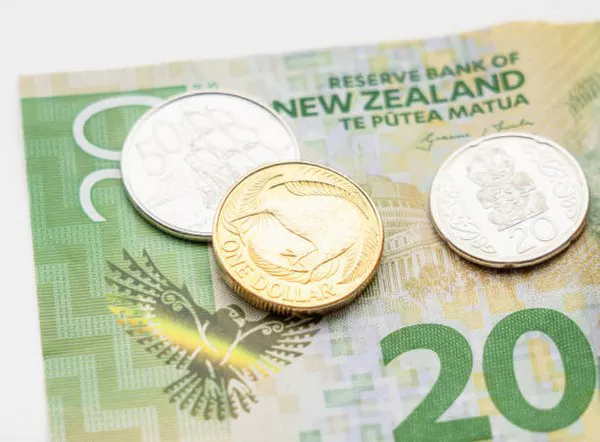New Zealand, a picturesque island nation in the southwestern Pacific Ocean, is not only renowned for its stunning landscapes and vibrant culture but also for its unique currency. The New Zealand dollar, often affectionately referred to as the “Kiwi dollar,” is a symbol of the country’s economic resilience and distinctive identity. In this article, we will explore six interesting facts about New Zealand currency, shedding light on its history, design, and cultural significance.
1. The Introduction of the Decimal Currency System:
Before the introduction of the New Zealand dollar, the country used the New Zealand pound, which was based on the British system of pounds, shillings, and pence. However, on July 10, 1967, New Zealand made a groundbreaking move by adopting the decimal currency system, ushering in the era of the New Zealand dollar. The change simplified everyday transactions and aligned the country’s currency system with global standards.
The new currency was introduced with a comprehensive public awareness campaign that included advertisements, educational materials, and even a catchy jingle. This transition marked a significant step in modernizing New Zealand’s financial infrastructure and promoting international trade and investment.
2. The New Zealand Dollar’s Distinctive Design:
One of the most visually striking features of New Zealand currency is the use of indigenous flora, fauna, and cultural elements in its design. The banknotes and coins showcase iconic New Zealand imagery, celebrating the country’s natural beauty and cultural heritage.
The New Zealand dollar’s banknotes feature prominent figures such as Sir Edmund Hillary and Kate Sheppard, alongside the majestic Southern Alps and the endangered yellow-eyed penguin. On the reverse side, native bird species like the kiwi and the morepork (native owl) take center stage.
Notably, the New Zealand dollar coins display the effigy of Queen Elizabeth II on the obverse side, as is customary for Commonwealth nations. However, the reverse side of the coins introduces unique designs, including the kiwi bird, silver fern, and other symbols synonymous with New Zealand’s identity.
3. The Resilient Kiwi Bird as a Symbol:
The kiwi bird, a flightless and nocturnal native species, holds special significance in New Zealand culture and has become an enduring symbol of the country. The kiwi features prominently on the one-dollar coin and is also colloquially used to refer to the New Zealand dollar itself.
The choice of the kiwi as a symbol reflects not only the bird’s uniqueness but also embodies qualities such as endurance, resilience, and a strong sense of identity — all of which resonate with New Zealanders. The kiwi’s inclusion in the currency reinforces a connection between the nation’s natural heritage and its economic representation.
4. Polymer Banknotes: A Technological Advancement:
In a move toward enhanced durability and security, New Zealand adopted polymer banknotes in 1999. The polymer substrate, made of biaxially oriented polypropylene, provides several advantages over traditional paper-based banknotes.
Polymer banknotes are more resistant to wear and tear, moisture, and dirt, leading to a longer lifespan. Additionally, the incorporation of advanced security features, such as transparent windows and holographic elements, enhances the difficulty of counterfeiting. The adoption of polymer banknotes reflects New Zealand’s commitment to staying at the forefront of technological advancements in currency design and production.
5. Unique Denominations:
New Zealand currency includes several denominations, each featuring distinct cultural and historical elements. While the coins range from the 10-cent piece to the two-dollar coin, the banknotes are issued in denominations of $5, $10, $20, $50, and $100.
The $5 note, for example, features Sir Edmund Hillary, the renowned mountaineer who, along with Tenzing Norgay, was the first to reach the summit of Mount Everest. The $20 note showcases Queen Elizabeth II and highlights New Zealand’s maritime heritage. These unique denominations not only serve practical transactional purposes but also contribute to the broader narrative of New Zealand’s history and achievements.
6. Cultural Representation on Banknotes:
New Zealand’s banknotes go beyond showcasing iconic figures and natural wonders; they also highlight the nation’s commitment to cultural diversity and inclusivity. The $10 note, for instance, features Kate Sheppard, a pioneering suffragette who played a crucial role in women gaining the right to vote in New Zealand in 1893. This tribute underscores the importance of social progress and gender equality in the country’s history.
Moreover, the inclusion of te reo Māori, the language of the indigenous Māori people, on the banknotes reflects New Zealand’s commitment to preserving and celebrating its rich cultural heritage. The dual-language approach aligns with the nation’s values of inclusivity and recognition of the Māori as integral contributors to New Zealand’s identity.
Conclusion: The Kiwi Dollar’s Rich Tapestry
The New Zealand dollar, with its unique design, cultural representation, and technological innovations, weaves a rich tapestry that reflects the nation’s values and identity. From the adoption of the decimal currency system to the resilient symbolism of the kiwi bird, every facet of New Zealand currency tells a story of progress, diversity, and pride.
As New Zealand continues to evolve, so too will its currency, serving as a tangible representation of the country’s journey and achievements. The Kiwi dollar, in its various denominations and designs, remains a testament to the enduring spirit of Aotearoa and the vibrant blend of natural wonders and cultural heritage that define this island nation.


